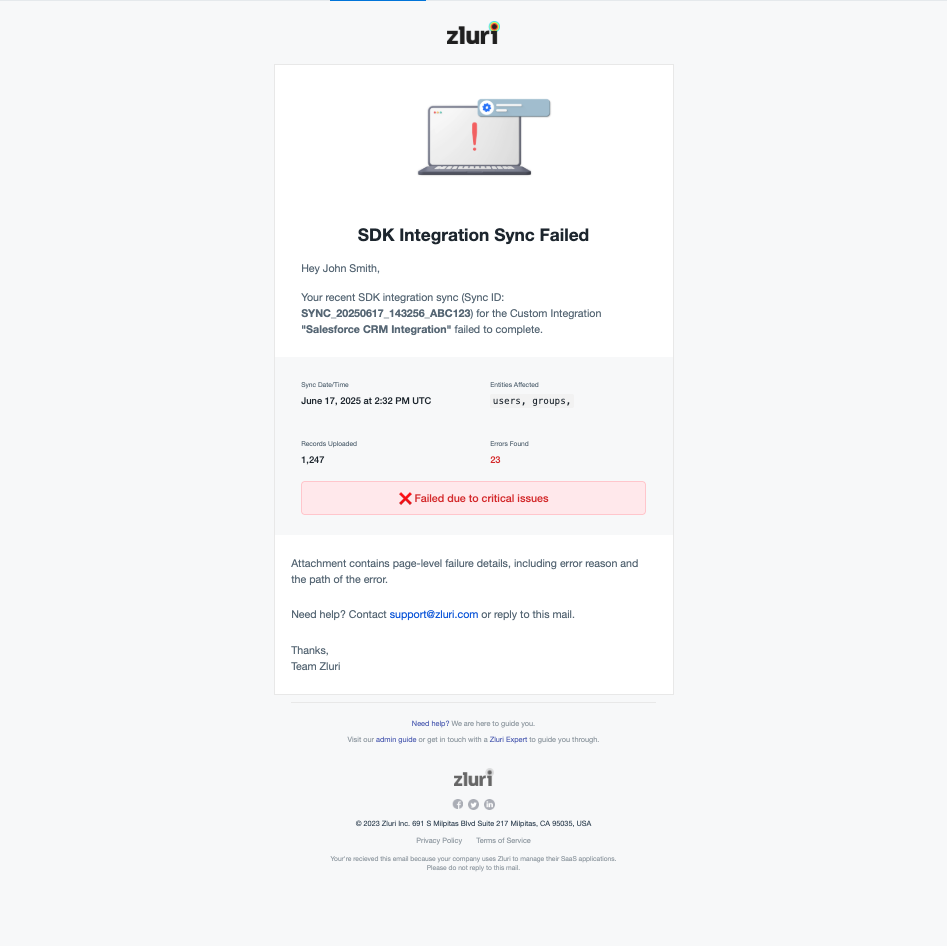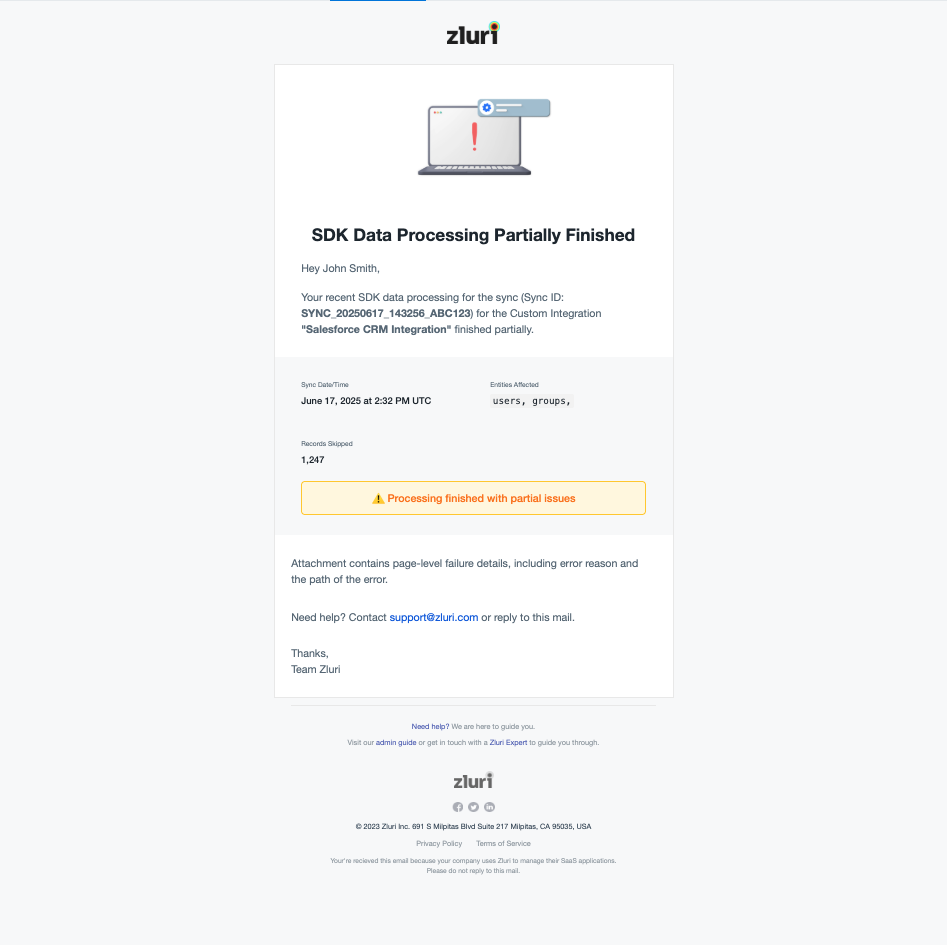Understanding Notification Emails
Self-Service SDK with Notification Emails
A key highlight of the SDK is the addition of notification emails, designed to keep teams informed, reduce downtime, and provide actionable guidance when issues arise during syncs.
Instant Feedback on Syncs and Errors
- Real-time Notification Emails: Receive prompt alerts for sync failures due to schema validation errors, as well as cases where warnings are generated (e.g., referential data could not be resolved, but the rest of your data load was still processed).
- Reduced Downtime: Instantly knowing about problems means you can act quickly—no more waiting or guessing if a sync was successful.
Advanced Error Breakdown and Clear Guidance
- Detailed Error Messages: Our notification emails provide explicit details, such as:
- Entity name and dataset affected.
- Page and line number for quick error pinpointing.
- Inline validation hints, for example:> "Line 23 in Page 4 has an invalid email."
- Comprehensive CSV Error Attachment: Each error notification includes a CSV template with a summary table (see format below) to facilitate further troubleshooting.
Customizable Notification Setup to Keep Teams in the Loop
- Configurable Notification Emails: You can specify up to three notification emails per integration instance.
- Error Mail Thresholds: Notifications for referential validation errors are triggered only if the error rate exceeds 75% (default, but fully configurable per SDK instance). This ensures your team is only alerted when a significant portion of data is affected, reducing noise and focusing attention.
- Easy Setup & Updates:
- Use the
Create Integration Instance APIto add notification emails when setting up an integration. - Use the
Update Integration Instance APIanytime to update the notification recipients.
- Use the
What Do the Error CSV Columns Mean?
When you receive an error notification email from Zluri SDK, you’ll find an attached CSV with details that directly inform your troubleshooting efforts:
| Column Name | Purpose | How To Use for Troubleshooting |
|---|---|---|
| EntityName | The logical dataset or entity (e.g., users, user_activity) where the error occurred. | Focus your investigation on this data segment. |
| PageNumber | The page number (batch) in the uploaded dataset contains the error. | Helps pinpoint the exact page upload in question. |
| Raw Data Link | A direct link to download/view the raw file containing the problematic data. | Directly open and examine the affected records. |
| Schema Validation Error Link | A link to a file listing schema errors and validation feedback for that batch. | Review this for exact validation failures and suggested fixes. |
Example Table:
| EntityName | PageNumber | Raw Data Link | Schema Validation Error Link |
|---|---|---|---|
| user_activity | 1 | File Link A | File Link B |
| users | 5 | File Link X | File Link Y |
Set Up Notification Emails
-
During Integration Setup: Add notification emails using the
notificationEmailsfield in the Create Integration Instance call. -
After Setup: Update or modify emails using the Update Instance API at any time.
You can add up to three email addresses. All key stakeholders will immediately receive sync status updates and actionable error details, maximising response agility.
Sample Notification Email Screenshots
-
Sync Failure Notification Email Template

-
Sync Warning Notification Email Template

Summary
With Zluri SDK, your team gets immediate, actionable feedback on integration errors, advanced error diagnostics (with CSV attachments for easy analysis), and a configurable notification experience—all designed to minimize troubleshooting effort and maximize integration reliability. Take charge of your integration health with Zluri SDK!
Updated 4 months ago
